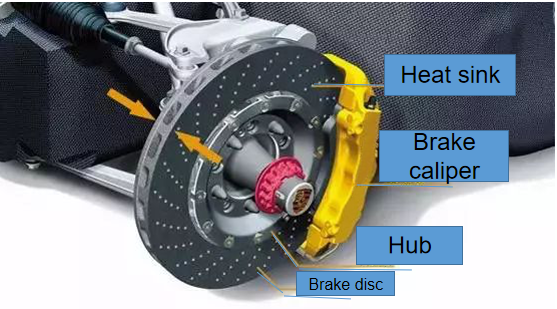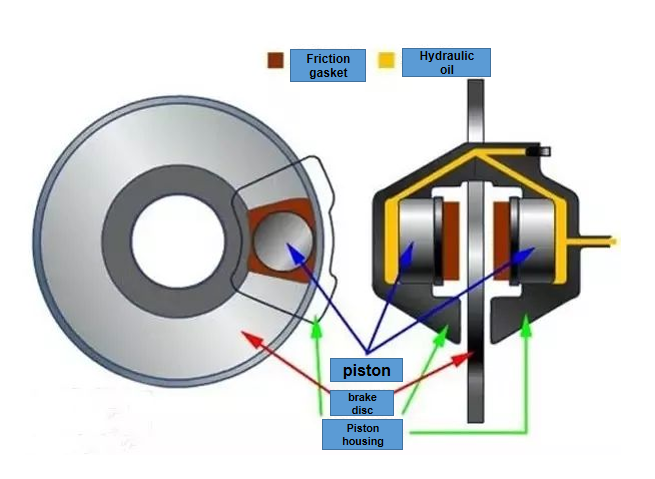As an important part of the brake system, the brake pad must depend on the whole brake system. Therefore, first of all, we will analyze the brake system, so that you can have a more comprehensive understanding of the working state of the brake pads in the entire brake system.
The disc brake is composed of a brake disc connected to the wheel and a brake caliper at its edge. When the brake pedal is depressed, the piston in the brake master cylinder will be pushed to build pressure in the brake oil circuit. The pressure is transmitted to the piston of the brake wheel cylinder on the brake caliper through the brake oil. The piston of the brake wheel cylinder will move outward after being pressured and push the brake pad to clamp the brake disc, causing friction between the brake pad and the brake disc to reduce the wheel speed, so as to achieve the purpose of braking.


From the above analysis and introduction, it can be seen that the brake pads play an important role in vehicle braking. In terms of structure, the brake pads are generally composed of steel plates, thermal insulation layers and friction blocks. The steel plate shall be coated to prevent rust. The thermal insulation layer is composed of non thermal conductive materials, because braking friction will generate a lot of heat energy. If these heat energy is transferred to the brake caliper, and finally to the oil circuit in the brake wheel cylinder, the temperature of the brake oil will rise, generating boiling bubbles, forming air resistance in the brake oil circuit, which will cause the reduction of the vehicle braking force. The friction block is composed of friction materials and adhesives. When the vehicle brakes, it will squeeze the friction block and brake disc to generate friction, and generate braking force to achieve the purpose of braking.
Hazards of assembling poor brake pads:
1. The low-quality products are generally from small manufacturers and workshops, so the brake pads produced do not have any quality and after-sales guarantee.
2. As waste materials are mostly used and jerry built, the quality of brake pads produced is not up to standard, which may lead to brake pad fracture during heavy braking, resulting in brake failure.
3. Unqualified materials are likely to increase their heat attenuation and thermal conductivity, thus reducing the braking effect of the vehicle.
4. Poor brake pads will increase the wear on the brake disc, and even cause damage to the brake disc when it is used. This will not only reduce the service life of the brake disc for a long time, but also bring potential safety hazards to daily driving.
The fake brake pads will be "too hard" or "too soft" due to the material. If the friction material is too hard, it will cause the brake disc to wear faster, and at the same time, it will produce greater braking noise and cause the braking distance to increase by more than 30%. The brake friction lining may crack during emergency braking, and the most important thing is that it cannot provide the best braking force for the vehicle; "Slightly soft" will wear out very quickly. During continuous braking or high-speed emergency braking, the temperature will rise sharply, or the braking force will decline significantly in rainy days. The decline is more serious, the surface material will fall off, extend the braking distance, and even cause brake failure, leading to traffic accidents.